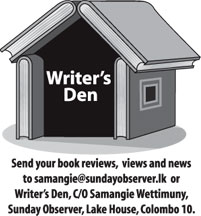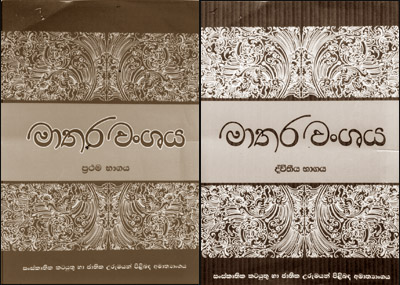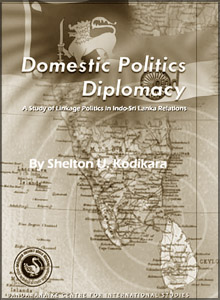
Argumentative guide to Heart of Darkness
Reviewed by Andrea White, California State
University
It is an irony, in keeping with the tone of “Heart of Darkness,” that
Chinua Achebe’s 1977 essay that denounces the novella as racist and
imperialist and as such unworthy of its place in the canon should have
so thoroughly “invigorated Conrad studies,” as D. C. R. A. Goonetilleke
observes (61).
It seems not only to have added fresh life to Conrad studies but to
have caused the focus of renewed critical attention to centre on that
very condemned novella, as can be seen from the fresh spate of works on
“Heart of Darkness,” among them these three.
|

Joseph Conrad’s “Heart of Darkness”. |
All of them not only acknowledge Achebe’s charges but do so by
historicizing the novella, providing the multiple contexts in which
those arguments might be better or differently understood.
D. C. R. A. Goonetilleke’s Joseph Conrad’s Heart of Darkness is part
of the Routledge Guides to Literature series, and is aimed at those
beginning “detailed study” of the novella, outlining the range of
responses and critical opinions the novella has occasioned over the
years.
To this end, the book assembles an array of contexts in order to
understand the novella’s cruxes and controversies, both the cultural and
historical, as well as the biographical, literary and intellectual. The
treatment of these contexts is broader than in Armstrong’s casebook, but
of necessity more abbreviated.
The book’s argumentative edge is on view from the first pages in
which Goonetilleke argues against those who position Conrad as
Euro-centric, racist, and/or imperialist and does so by contextualizing
the work in ways generally familiar to readers of casebooks such as
Armstrong’s and of much current scholarship.
However, Goonetilleke’s use of the biographical context provides a
somewhat novel view of a writer who was not simply “homo duplex” but an
unusually complex individual, shaped by his Polish past, his travels
with the French Mercantile Service and then with the British Merchant
Service, the literatures of Poland, France, and England, as well as his
years as an English writer living on England’s south coast.
Goonetilleke argues that we need to consider more closely how
Conrad’s years at sea brought him into contact with non-European
cultures of the various countries the merchant services took him to,
with peoples of the West Indies, South-East Asia, Australia, and Africa.
Unlike other modernists, such as Woolf and Joyce, who never travelled
outside of Europe, Conrad, Goonetilleke emphasizes, was a migrant writer
who came to his subject in 1899 with more nuanced and informed thoughts
about non-Europeans than most of his contemporaries.
I am intrigued by this view but also a bit sceptical since most
writers on the subject aver that Captain Korzeniowski most likely
confined his exploration of those foreign lands his years as sailor,
mate, and master took him to, to the European-dominated ports in which
his ships weighed anchor. But this is a fresh view, one that should be
seriously considered.
In the second section, “Critical History,” Goonetilleke summarizes
and comments upon the novella’s reception in six sections: the initial
reviews, the period of 1930 1959 and the novella’s general rise, the
period dominated by politics, philosophy and ethics from 1960 the 1970s,
the decades of the 1970s and 1980s that he entitles “Beyond formalism,”
and a final section on “Post-colonial criticism” that he divides into
early and more recent.
This breakdown and the major contributors to and general observations
about the nature of each period could serve the student/scholar
embarking on a more formal reception study of the novella.
This guide is in conversation with major commentators on the novel:
Edward Said, JanMohamed, V. S. Naipaul, and Chinua Achebe, and he does
so quite directly, using contextual evidence to refute or, at least,
complicate — many of their assertions about Conrad’s racism and
imperialism.
He discusses the cultural context of Social Darwinism and its
attendant racism which, he demonstrates, “Heart of Darkness” opposes.
He argues that, unlike most of the adventure and travel writing of
the day, in his fiction “Conrad breaks with nineteenth-century
stereotypes of unrestrained savagery” (20) and locates the darkness in
Europe rather than in Africa. He provides cogent external evidence that
supports the many indictments of imperialism he locates in the work,
among which was Conrad’s role in the Congo Reform movement (13).
Indeed, Goonetilleke quotes E. D. Morel who headed up the Congo
Reform Association as saying that “Heart of Darkness” itself was “the
most powerful thing ever written on the subject” (14).
More surprisingly than his countering of some postcolonial views,
Goonetilleke even takes on Conrad himself and asserts that the chief
character in the story is Kurtz, not Marlow, even though Conrad had
written that the story should be seen as “something quite on another
plane than an anecdote of a man who went mad in the Centre of Africa”
(CL 2: 360).
While Goonetilleke goes on to write with great insight about Kurtz
and about what we learn about him, albeit indirectly through Marlow, I
have never been sure what is to be gained by proving that Kurtz is more
important than Marlow or vice versa. They seem to me inextricable, the
narrated and the narrator who both come into being through Marlow’s
telling.
However, Goonetilleke argues his point well that “Kurtz was no
innocent who simply became a victim of Africa” but an extraordinarily
gifted European who acts opportunistically and barbarously. In any case,
he insists throughout on the separability of Marlow and Conrad.
Part of Conrad’s irony, he argues, is in his depiction of Marlow as
something of a chauvinist and misogynist. In response to those who have
accused Conrad of sexism, Goonetillike argues that actually many of
Conrad’s female characters are strong individuals and, in the case of
Marlow’s aunt, have more social power than the men (43).
He goes on to make use of current work on Conrad from a feminist and
gender theoretical view, that of Johanna M. Smith and Nina Pelikan
Straus in particular (63), and in his third section, “Critical
Readings,” Ruth Nadelhaft’s feminist perspective is included along with
other seminal recent essays that represent a range of theoretical
perspectives.
The fourth section, “Adaptations,” lists various versions of the
novella, particularly and at some length the film Apocalypse Now.
The fifth section, “Further Reading and Web Resources,” will serve
students and interested readers well for it not only contains an up to
date selected bibliography of critical print sources on the novella, as
well as on his life, but also a useful list of web resources.
Matara Wanshaya:
Heroes of Matara
by C. A. Lenin Divakara
The chronicle, Matara Wanshaya which records and analyses the role
played by the people of Matara in the annals of history will be launched
ceremonially and presented today to President Mahinda Rajapaksa at the
National Literary Arts Festival which is now being held at Narandeniya
MMV, Kamburupitiya, Matara.
Matara Wansaya has been enriched with articles written by
intellectuals born in the Matara region as well as those reputed in the
academic world. The topics range from literature to painting, which from
the cultural heritage of the Matara region. In short, it is a unique
work of research on the cultural heritage of the population who have
lived on the banks of Nilwala.
 The articles published in Matara Wanshaya, deal with the social,
political, economic, cultural and religious aspects of the life of the
people as well as biographies of outstanding personalities who made
their contribution to national awakening. The articles published in Matara Wanshaya, deal with the social,
political, economic, cultural and religious aspects of the life of the
people as well as biographies of outstanding personalities who made
their contribution to national awakening.
Minister of Cultural Affairs and National Heritage Mahinda Yapa
Abeywardena mooted the project to mark the occasion of national
significance the annual Literary and Arts Festival to be held in
Kamburupitiya, Matara. This move by the Minister is a clear departure
from the tradition of publishing an anthology of articles on literature
to mark such a significant occasion.
Matara region (ancient Ruhuna), had been the cradle of the national
resurgence where heroes organized struggles whenever the sovereignty and
the integrity of the country was threatened by foreign invaders.
Magama Kingdom, a part of ancient Matara had been the launching pad
of the struggle to defeat the foreign aggressors.
After 1505, too when the Western powers invaded the island and formed
their administration, it was the educated elite of Matara who initiated
the bold step of the anti Portuguese and anti Dutch freedom struggle in
the coastal areas of the island.
This struggle, however, was based on education and literature which
laid the foundation for the cultural revival and the political struggle.
This resurgent movement helped build a national identity which is a sine
qua non of awakening of a nation, oppressed for centuries by alien
aggression.
The esteemed oriental seats of learning which produced tens of
thousands of scholars, Vidyodaya and Vidyalankare Pirivena and their
parent institution, Paramadhamma Chethiya Pirivena, Ratmalana were
established by the renowned Maha Sangha who hailed from Matara,
precisely the Weheragampita Raja Maha Viharaya, Matara where legendary
Ven. Karakota Dhammarama Nayaka Thera lived.
Looking back, we notice that the Sinhala literature began to decline,
with the fall of the Kotte kingdom due to the Portuguese invasion and
their political manoeuvres that sowed the seeds of discord among the
Sinhalese royalty.
Meanwhile, the instructions of Arittaka Wendu to the King contributed
to the decline of the Sitawaka Kingdom. During this period, many
religious scholars fled to the hill country seeking refuge and others to
Matara, where there were educational institutions of high repute.
The migrants from Kotte and Sitawaka Kingdoms collaborated with the
educated elite of the Matara region to awaken the nation through a
cultural revival, which paved the way for the English - speaking nous-riche
resident in Colombo to initiate the movement for constitutional reforms.
This scholarly, work is aptly titled Matara Wansaya because the term
Wansaya meaning Chronicle denotes a continuous record of events of
social, political and cultural significance which changed the course of
history.
Of course, Sinhalese literature is noted for chronicles such as Maha
Vamsa, Chula Vamsa and Deepa Wansaya which glorify the reigns of Kings
and Queens and their feats. Their authors highlighted the feats of their
favourite rulers and ignored the setbacks and failures.
The royal dynasties and even their petty quarrels were highlighted.
They are, of course, valuable sources of history for students of history
who may benefit from its wealth of information of the achievements of
the royal dynasties giant irrigation works like tanks, dagoba and
sculpture which speak volumes of the genius of the common man as well.
In addition to above mentioned chronicles there are also Dhatu
Wanshaya, Bodhi Wanshaya and Thupa Wanshaya which describe in detail,
the history of the Sacred Tooth Relic, Sri Maha Bodhi and the greatest
stupa, Ruwanweli Seya and the rituals conducted in elaborate detail.
In modern times, several chronicles have enriched the Sinhalese
literature namely, Mahaweli Wanshaya, which describes the ancient
civilisation of the ‘people living on the Mahaweli valley and the
aspects of the new culture.
Further the Uva Wanshaya and Sabaragamu Wansaya were chronicles that
describe the history of provinces which enriched the Sinhalese
literature. Moreover, there are two books on Matale and Gampola
districts too but they have not been titled as Wansaya.
Matara Wansaya consisting of two volumes are an anthology of articles
by renowned scholars on the social, political and cultural aspects of
the Matara region.
The book is the result of the labour of forty scholars including
professors and lecturers of universities. At the outset they were
invited to a meeting in which they formulated a plan to produce a unique
chronicle of lasting value.
For example, the topic ‘history of Matara’ dealt with by eight
authors, each of whom was entrusted with eight topics per history,
identity and traditions of Ruhuna, the stamp of Matara in the Sinhala
culture inscriptions found in Matara, especially Panakaduwa copper
plate.
The period from the Naga tribal settlement to 1500 A.D., the period
from 1500-1948, 1931-2005 election history, the Morawaka Korale, William
Graville report (1813) and the information of Matara derived from
literary works.There are 16 chapters with 81 articles dealing with
topics written by 85 esteemed scholars.
There are 1134 pages in the two volumes.Matara Wansaya was compiled
and edited by a Board of Editors, Sugath Watagedera, a prominent
journalist too served as an editor, The Board of Advisors consisted of
the Chancellor University of Ruhuna, Ven. Attuduwe Siri Rahula Maha
Nayaka Thera, Deputy Vice-Chancellor of the University of Ruhuna,
Professor Gamini Senanayake and District Secretary, Matara Gamini
Jayasekara, the Minister of Cultural Affairs, Mahinda Yapa Abeywardana
and the Secretary, Ministry of Cultural Affairs and National Heritage,
G. L. W. Samarasinghe were ex-officio advisors. The edition Matara
Wansaya had to strike a balance between creativity and research.
In spite of constraints, they were able to turn out a valuable
scholarly work mainly due to the hard work of the Coordinator, Nihal P.
Jayatunga and the patronage and cooperation extended by the Minister
Mahinda Yapa Abeywardana and the Secretary of the Ministry G. L. W.
Samarasinghe. Since 62 articles out of 85 have been contributed by
professors and lecturers of Universities and 83 writers by experienced
authors, Matara Wanshaya will be an invaluable guide to any person
interested in the history and culture of Ruhuna.
(This article was written based on the information
provided by Nihal P. Jayatunge, Media Consultant of the Ministry of
Cultural Affairs and National Heritage.)

Skilful analysis of linkage politics
Domestic Politics and Diplomacy: A Study of Linkage Politics in Indo-
Sri Lanka Relations
By Prof. Shelton Kodikara,
Edited by W. B. Dorekumbura Published by the Bandaranaike Centre for
International Studies (BCIS)
Prof. Shelton Kodikara, doyen of International Studies in Sri Lanka
was working on the manuscript of this publication just before his death
in 1994. The Bandaranaike Centre for International Studies (BCIS) has
decided to publish this book posthumously, as a tribute to a former
Council Member, who rendered an invaluable contribution to the
development of the Centre and the discipline of International Relations
in Sri Lanka.
In the book, Prof. Kodikara skilfully analyses the linkage between
domestic politics and foreign policy. As regards Indo Sri Lanka
relations the author avers that internal variables had a determining
influence on the relationship between the two nations.
In tracing Sri Lanka’s foreign policy since independence, he explores
important issues pertaining to Indo Lanka relations especially those
relating to geopolitics, maritime boundaries and strategic issues.
The book also discusses how a conflict such as Sri Lanka’s ethnic
crisis evokes interest in foreign countries, with various groups
responding in different ways in accordance with their own perceptions.
The Book will be an invaluable asset to students of diplomacy and of
international affairs.
State Literary Awards 2008
The National Literary Festival which commenced on September 11 at
Kamburupitiya, Matara will conclude today.
The winners of the State Literary Awards 2008 are as follows:
Sinhala Novel: Atawaka Puththu by Liyanage Amarakeerthi.
Short Story: Vil Thera Maranaya by Gunadasa Amarasekara.
Poetry: Yati Viyana by Lakshantha Athukorala.
Lyrics: Alakamandawa by Rathna Sri Wijesinghe.
Science Fiction: Kola Pallama by Kapila Weerasingha.
Best academic publications:
1. Parani Sinhala Vivaha Sanskruthiya by Dr. Premadasa Sri Alawattage
2. Bharatha Munivirachitha Natya Shastraya by Hiripitiye Pannakiththi
thera
Translations:
Novel: Sinhala Translation of Leo Tolstoy’s Anna Karenina by
Swarnakanthi Rajapaksa.
Short Story: Shreshta Lekhakayange Wishishta Ketikatha by Chandana
Mendis. (Translation of ‘A Treasury of 25 Grand Short Stories by World’s
Greatest Writers’).
Drama: Eyskilesge Orestiyanu Natya Trikaya by Ariyawansha Ranaweera
(Translation of The Oresteian Trilogy - Aeschylus).
English
Novel: Dragons in the wilderness by Jean Arasanayagam.
Short Stories: Short and Verse by M. T. L. Ebell.
Poetry: I am a Modern Man by Carl Muller.
Non-Fiction: Memoirs of a Cabinet Secretary by Bernard Percival
Peiris.
Translation: Martin Wickramasingha-Selected Short Stories by Ranga
Wickramasingha.
Children’s Literature: The Stupendous Statue by Vipulasiri Adikari.
Tamil
Poetry: Kurunjithennava Kavithaigal by Kurunjithennavan,
Thimilaithumilan Kavithaikal by Thimilaithumilan.
Short Stories: Varal Meengal by Ammanullah.
Novel: Not Opted.
Drama: Pothi by Kikko.
Children’s Literature: Maram Vettiyum Oru Thevathaiyum by O. K.
Gunanathan.
Research: Ellathu Naveena Kavithai by Dr. S. Yogarajah.
Translation: Ora Raththam by Dickwella Zabwan, Ulappal Uyarnthavargal
by R. Sadakoban.
Winners of Sahithya Rathna award
1. Prof. A. V. Suraweera (Sinhala medium)
2. Yasmine Gooneratna (English medium)
3. Prof. A. Shanmugadasan (Tamil medium) |
